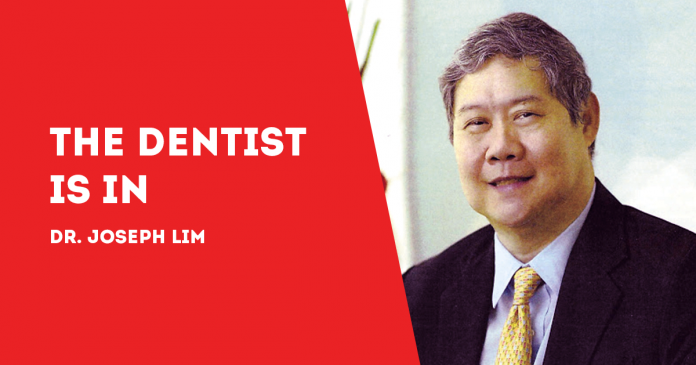
COVID-19 infection in dental practice may be less likely than in other health care settings.
The data, collected through a survey of national dental associations in five countries and literature search, may be preliminary. But they show dentists infection rates is lower compared with the overall infection rates of other healthcare workers, excluding dentists and other oral health professionals, over the same time frame.
The FDI (Fédération Dentaire Internationale) has been compiling data from countries worldwide to assess the rate of COVID-19 infection among dental practitioners.
(Based in Switzerland, the FDI represents more than one million dentists in 200 national dental associations and specialist groups in close to 130 countries, including the Philippines.)
‘’Understanding the infection risk posed in dental practices is important to inform current and future decisions on dental practice restrictions and closures,’’ the FDI said in a press statement.
‘’Preliminary results suggest dentists may be at lower risk than other healthcare workers,’’ it said.
Since the beginning of the pandemic, dental practices in many countries have experienced periodic closures and restrictions due to concerns about the risk of transmitting the SARS-CoV-2, the virus that causes COVID-19.
Restricting access to dental care has resulted in negative consequences to oral health due to missed preventive care and delayed interventions, the FDI says, citing an analysis of the Australian Child Dental Benefits Schedule and a study on the impact on child dental services in the United Kingdom.
It also has other severe impacts, such as missed or delayed detection of oral cancers. There was an increase in the inappropriate prescribing of antibiotics and analgesics.
According to preliminary data, in Brazil, the infection rate (per 10,000) for dentists was 81.4. In comparison, that for health care workers (per 10,000) was 181.7.
That was in May 2020, long before the fast-spreading Brazilian variant appeared. At that time however, the pandemic was spreading fast in the South American country.
In Spain it was 304.9 for dentists and 922.9 for health care workers in June 2020.
In the United States, the infection rate in December 2020 for dentists was 91.1 while that for health care workers was 117.9.
There may be several reasons for this. Importantly, people experiencing COVID-19 symptoms are unlikely to visit the dentist. And measures are in place to reduce the transmission risk in many dental clinics, such as pre-treatment screening questionnaires.
Prior to the pandemic, oral health professionals already used a high-level of Personal Protective Equipment (PPE). Coupled with the strengthening of PPE recommendations in many countries early in the pandemic, this may also reduce the risk of infection in dental practice.
Further research is needed to better understand the infection rates and the differences between dentists and other health care workers, and between countries.
FDI is continuing to compile further data from more countries and will publish the full results of its work in the coming months.
***
Dr. Joseph D. Lim is the former Associate Dean of the UE College of Dentistry, former Dean of the College of Dentistry, National University, past president and honorary fellow of the Asian Oral Implant Academy, and honorary fellow of the Japan College of Oral Implantologists. Honorary Life Member of Thai Association of Dental Implantology. For questions on dental health, e-mail jdlim2008@gmail.com or text 0917-8591515./PN





